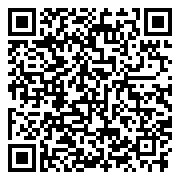Introduction
This training course is designed to provide participants with a comprehensive understanding of three major radio communication systems: PMR (Portable Mobile Radio), DMR (Digital Mobile Radio), and TETRA (Terrestrial Trunked Radio). Throughout this course, participants will gain valuable insights into the radio communication basics, the radio communication protocol, and the technical functionalities of these systems. They will explore how these systems are applied in various environments such as commercial industries, emergency services, and public communications. Additionally, the course will offer an in-depth comparison of these three systems, helping participants make informed decisions on selecting the most suitable radio communication system for different contexts. By the end of the course, attendees will have the knowledge necessary to navigate the world of radio communication systems effectively.
Course Objectives
By the end of this course, participants will be able to:
- Understand the core principles of PMR, DMR, and TETRA radio communication systems.
- Learn the unique features of each system and their practical applications in commercial, industrial, and emergency settings.
- Gain the skills to choose the most suitable radio communication system based on specific requirements.
- Compare the advantages and disadvantages of each system in terms of performance, cost, and practical use.
- Develop a deeper understanding of the theoretical concepts behind radio communication, network technologies, and how these systems integrate into broader communication infrastructure.
Course Outlines
Day 1: Introduction to PMR (Portable Mobile Radio) Systems
- Overview of PMR radio systems and their applications.
- Understanding radio communication basics: How PMR functions in commercial industries and emergency services.
- Key applications of PMR systems in everyday life and business environments.
- Tools and devices used in PMR systems, including software.
- Challenges and benefits associated with the use of PMR systems.
Day 2: DMR (Digital Mobile Radio) System
- Introduction to the DMR system and its features.
- Comparison of DMR and PMR: How DMR improves upon traditional PMR radio communication systems.
- Components of the DMR system: Stations, software, and network infrastructure.
- The role of DMR in improving communication efficiency and ensuring data protection.
- Real-world applications of DMR in industries and public services.
Day 3: TETRA (Terrestrial Trunked Radio) System
- Introduction to the TETRA radio system and its main features.
- System components: Radio stations, devices, and network structure.
- Specific TETRA communication applications in emergencies and public services.
- Harmful interferences in TETRA systems and methods of detection and resolution.
- Relationship between 5G networks and TETRA radio systems.
- International experiences and mechanisms for establishing relevant agreements on TETRA communication.
Day 4: Comparison Between the Three Systems (PMR, DMR, TETRA)
- A comprehensive comparison of PMR, DMR, and TETRA radio communication systems.
- Analysis of the advantages and disadvantages of each system based on performance, cost, and use cases.
- How to select the right system based on application type: commercial, emergency, or public safety.
- Case studies: Choosing the appropriate system for real-world scenarios.
- Decision-making: How to make informed choices when selecting radio communication systems.
Day 5: In-Depth Theoretical Concepts of the Three Systems
- Theoretical breakdown of how PMR, DMR, and TETRA radio systems work, with a focus on radio communication protocols.
- Introduction to the network technologies used in all three systems and their integration into broader communication systems.
- Future challenges in radio communication systems and upcoming technological advancements.
Why Attend This Course: Wins & Losses!
Attending this course will equip you with the knowledge and skills necessary to navigate the complex landscape of portable radio communication systems. Whether you're working in commercial industries, public services, or emergency communications, this course will provide you with a solid understanding of PMR, DMR, and TETRA systems. You'll gain insights into the key features, practical applications, and how to choose the right radio communication system for different requirements.
By attending, you will:
- Gain expertise in understanding how PMR, DMR, and TETRA radio communication systems work and their practical applications.
- Learn to compare these radio communication systems based on key factors like cost, performance, and usage, making you more effective in your role.
- Enhance your decision-making abilities when choosing radio communication systems for commercial or emergency communication contexts.
- Develop confidence in recommending the most efficient system for a given situation based on technical requirements and applications.
Conclusion
By the end of this course, participants will have a thorough understanding of the core principles behind PMR, DMR, and TETRA radio communication systems. You will be equipped with the skills needed to assess the advantages and disadvantages of each system and select the most appropriate radio communication solution based on specific needs. The course will prepare you to handle communication challenges in both commercial and public safety sectors while making strategic decisions for future technological advancements in radio communication systems.
Join us and enhance your expertise in radio communication—empower your ability to select the best radio communication solution for real-world scenarios and future-proof your communication strategies.


